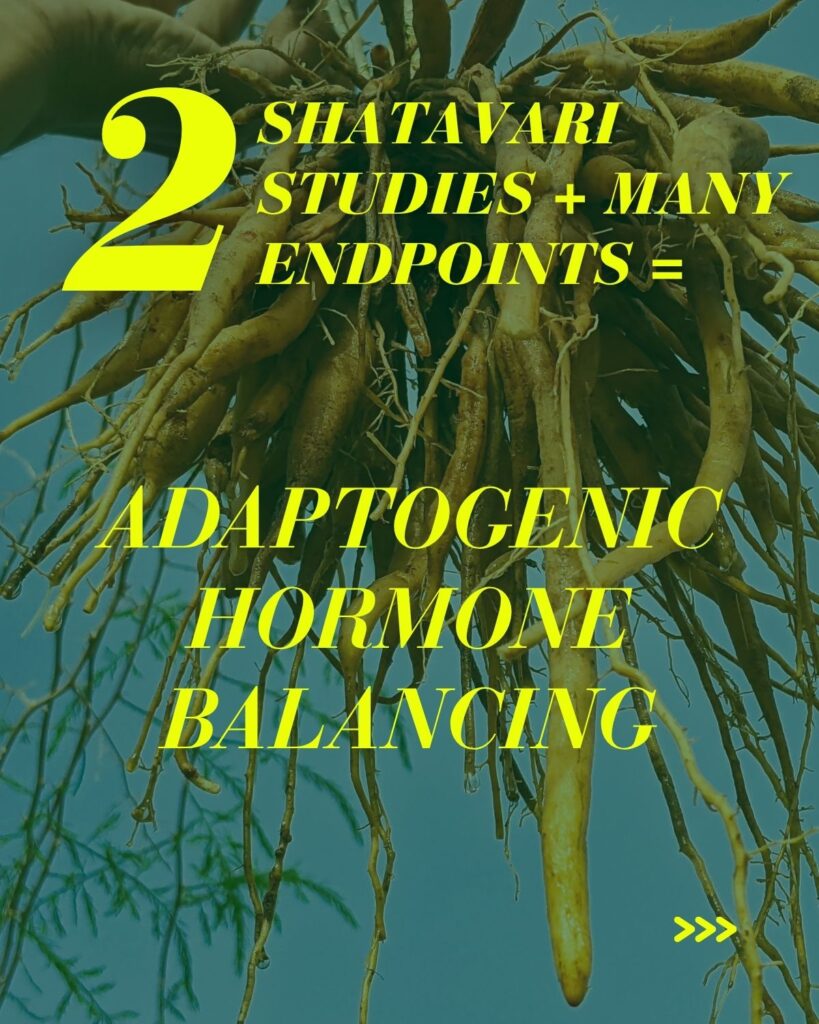In Ayurveda, there’s a category of herbs known as rasayanas: literally “the path of essence.”
These are rejuvenative botanicals that don’t just address symptoms, but work to restore the body’s fundamental capacity for self-regulation, nourishment, and resilience across the lifespan.
Asparagus racemosus, known as Shatavari, is considered one of the premier rasayanas for women’s health, and for millennia has been used to support women through every phase of life: from menarche through motherhood to menopause. In more modern herbalism, it has similarly become known as one of the top adaptogens globally, herbs that help the body and mind adapt to stress.
What makes adaptogens like Shatavari particularly intriguing is their possible bidirectional activity: rather than pushing the body in one fixed direction, they’re believed to help restore homeostasis by modulating systems that have become either excessive or deficient.
When hormones run high, the herb may help temper them. When they’re low, it may support healthy signaling. This adaptogenic principle isn’t about replacement, it’s about supporting the body’s innate regulatory intelligence.
➡️ Two clinical studies on a proprietary branded Shatavari, called Xeya Modern Shatavari by NXT-USA, have exhibited what appears to be context-dependent hormonal modulation:
In PCOS contexts (characterized by elevated androgens): supplementation was associated with reductions in total testosterone, normalized LH/FSH ratios, and improved insulin sensitivity: essentially helping to bring excess markers down toward physiological ranges.
In perimenopausal contexts (characterized by declining hormones): the same botanical extract showed associations with supported estradiol and AMH levels, improved follicle development, and reduced menopausal symptoms like hot flashes: helping to support what’s becoming low.
More clinical trials are underway, however I find it remarkable how these findings align with Shatavari’s traditional classification as a rasayana: a rejuvenative tonic used across all stages of women’s reproductive life.
The mechanistic picture emerging from contemporary research, including modulation of estrogen receptors, support for HPA and HPO axis function, antioxidant activity, and effects on stress resilience, may help explain what traditional practitioners observed empirically for centuries.
As we continue to bridge ancient wisdom with modern investigation, herbs like Shatavari remind us that sometimes the most sophisticated intervention isn’t about overpowering the system, but about supporting its inherent capacity to find balance.
To learn more about Shatavari, come see my talk on Wed. 29th at 4:30 pm at the Product Development Theater (Booth #8011) at Supplyside Global, or visit the good folks of NXT-USA at Booth #7501. To see the details on the studies, visit my PDF post on LinkedIn at this link: https://www.linkedin.com/posts/kerry-hughes-941353_shatavari-studies-adaptogenic-hormone-balancing-activity-7386763277009289216-Ui2A?utm_source=share&utm_medium=member_desktop&rcm=ACoAAAANEoEBzLdbgS9fjLoyZvrkZbXD8Nj5SFM
Bidirectional Hormone Support: New Research Confirms Shatavari’s Traditional Wisdom 💚 🌿

